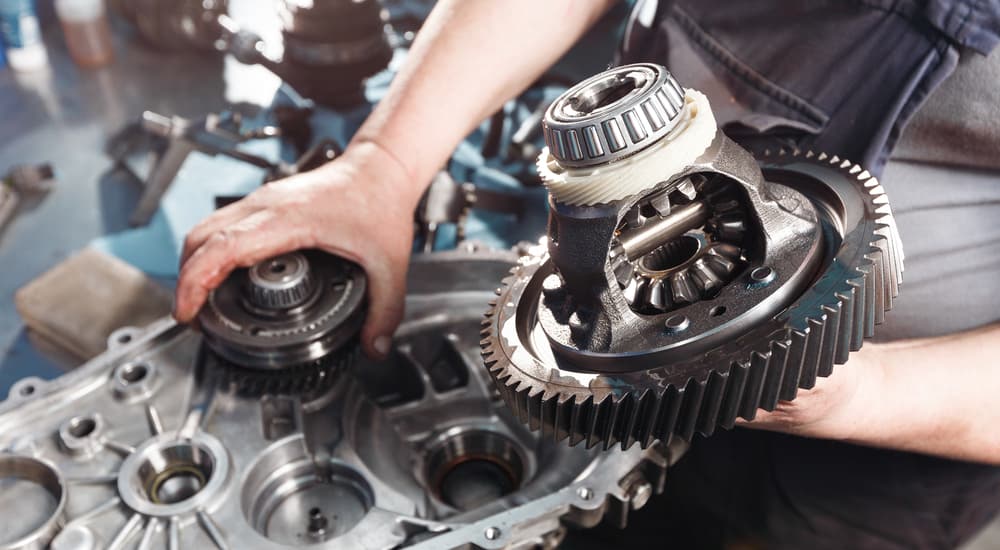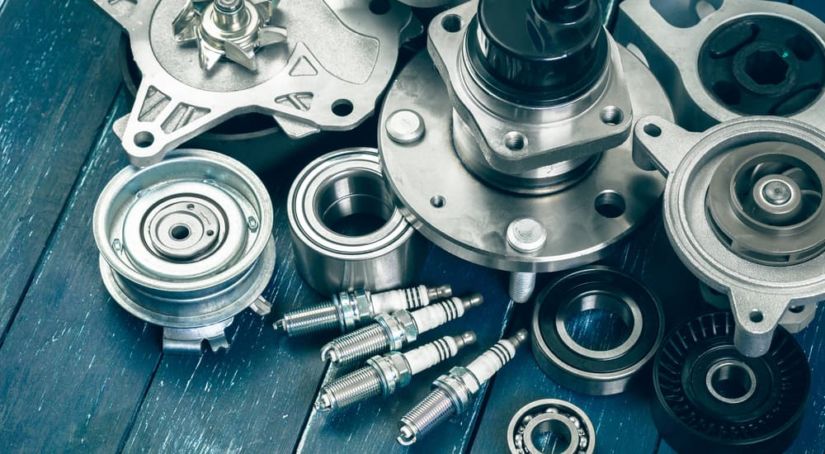There come times over the course of a vehicle’s life when it will need some sort of repair work done. Whether you find yourself involved in an unfortunate automotive accident, or simply the victim of wear and tear from frequent use. You will inevitably find yourself facing automotive repairs, even if you do it yourself with equipment from a car parts store, it can be a rather time-consuming and costly affair when all is said and done. Or you can go to a mechanic which can be tricky as well. You have to find availability, set up an appointment, and not only do you have to pay the mechanic for their work, but also for the parts used in the repairs.
While some people may think that they do not have any options, there are a few different options available to the average customer. The first and most important decision when it comes to purchasing vehicle parts is whether you want to buy OEM parts or aftermarket parts. OEM stands for original equipment manufacturer and refers to the original parts that are used in your vehicle by the manufacturer.
On the other hand, aftermarket parts are parts designed for specific vehicles by a 3rd party company and sold by outside sources, like a car parts store. You have to choose as to what kind of parts are used to repair your car. Both types of parts are good options, but which kind is the best? You may find yourself asking questions such as; what are the differences between OEM parts and aftermarket parts? Does it matter what kind of parts are used to repair your vehicle? Will the parts I use affect my vehicle’s resale value? While it can definitely be difficult to figure out exactly what kind of parts you want to put into your vehicle, having a bit of knowledge going in does help you make the most informed decision. Here, we’ll look at a few of the differences, as well as the advantages and disadvantages of choosing OEM or aftermarket parts.
What Exactly Are OEM Parts and Aftermarket Parts?
OEM parts are original equipment manufacturer parts, which means that they are the same parts that are in the vehicle when it was brand new from the manufacturer. Essentially, they are the exact parts that the vehicle was designed and created using. Sometimes, the parts are made by the vehicle manufacturer themselves, and other times they are designed by a 3rd party company but are still used by the manufacturers to build the vehicle. Explains for this are manufacturers like Mopar for Chrysler/Dodge and Motorcraft for Ford.
Conversely, aftermarket parts are parts which are designed by a separate 3rd party. There are a number of different automotive part companies that exist, which sell a massive variety of different parts for vehicles. They can be mass-produced and can be purchased from various sources. However, they can be a hit or miss in terms of quality at times.
Pros and Cons
OEM Parts
Pros
- Designed By the Dealer: One of the best things about OEM parts is that they are either created directed by the dealer or are selected for your vehicle when it is being designed and built. There is no guesswork involved or worry about proper sizing, as they were hand-selected by the people who created your vehicle.
- Top Quality: Being either designed by or hand-picked directly by the people who made the vehicle, you can assure that the parts you are getting for your car, truck, or SUV are of the highest quality. Vehicles are required to undergo very stringent safety regulations and require an extensive amount of various safety tests, such as braking and crash testing. By getting the parts that were specifically used for the vehicle while it was undergoing and had passed multiple safety tests, ensuring that the parts had been thoroughly tested.
- Sold Directly By the Dealer: Another positive to OEM parts is that they are sold directly by the dealer. This is beneficial because not only will the people selling the parts be intimately familiar with them, but you would also be able to get your vehicle serviced by mechanics who are certified to work on your specific brand of vehicle.

Cons
- Pricing: Due to the various testing and the overall quality of OEM parts, they can tend to be pricier than aftermarket parts, sometimes up to 60% more expensive. While you do generally pay for quality, the price tag for some parts can turn some people away.
- Limited Quantity: Due to some OEM parts being designed and created directly by the vehicle makers, the quantities for some parts can be quite scarce at times, and can fluctuate with vehicle production. Oftentimes when vehicle companies are creating a new vehicle design, older parts can become quite difficult to locate. Of course, these parts can then get even more expensive as numbers dwindle.
- Sometimes Only Sold By Dealer: Certain OEM parts are only sold directly by the dealer, which means that you do not have very much budge room at all when it comes to negotiating prices. It is not like you can go anywhere else if the only person who sells that part happens to be the person who makes it. And they can set their price to whatever they would like.
Aftermarket Parts
Pros
- Low Pricing: More often than not, aftermarket parts can be considerably cheaper than the parts they are replicating. This can be particularly useful if you find yourself requiring multiple different parts, as to not drown yourself in repair costs. I am certain I am not alone in saying that the lower the price, the better.
- Large Quantities: Frequently, aftermarket parts are mass-produced in large quantities, and can be produced rather quickly. Not only does this help immensely in always being available for when you are really in need, but it helps to drive the price down. Many different stores can keep a constant stock of most parts and can have them delivered sooner than later if they run out.
- Many Different Sellers. Due to the sheer amount of aftermarket parts that are produced, several different stores specialize in automotive parts. Not only does this increase availability and access for different vehicle owners, but it also gives the prospective buyer a number of different options, which can also aid in lowering prices.
Cons
- Mass Produced By a 3rd Party Company: After-market parts are created in large quantities by a company who did not create the vehicle initially. Due to this, the sizing of the parts is not always accurate. This can create quite a headache for whoever is installing it.
- Questionable Quality: While OEM parts go through extensive testing during the vehicle’s initial testing, aftermarket parts do not. The companies making the part do test them, but that testing is nowhere near as extensive or precise as the ones experienced by OEM parts.
- Limited Warranties: Frequently, aftermarket parts will not have as good of a warranty on them as their OEM counterparts. While no one ever expects new parts to fail on them, it can happen to anyone. So aftermarket parts may not be the best idea if you want long-lasting protection.
Ultimately, it comes down to the buyer whether or not they want to purchase OEM or aftermarket parts. If cheap costs and convenience are favored than you should probably look towards aftermarket parts. However, if you happen to favor quality and dependability, and do not mind spending a little bit extra, you could head down to your local dealership. They offer quality and authentic OEM parts with their knowledgeable and helpful staff to help find exactly what you need.



